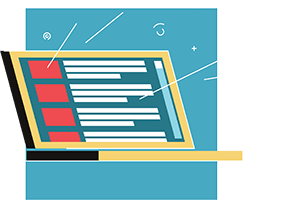Future of Medicine
10 Ways Technology Is Changing Healthcare
The future of healthcare is shaping up in front of our very eyes with advances in digital technologies, such as artificial intelligence, VR/AR, 3D-printing, robotics or nanotechnology. We have to familiarize with the latest developments in order to be able to control technology and not the other way around. The future of healthcare lies in working hand-in-hand with technology and healthcare workers have to embrace emerging technologies in order to stay relevant in the coming years.
 Dr. Bertalan Mesko, PhD
Dr. Bertalan Mesko, PhD
15 min | 3 March 2020
The future of healthcare is shaping up in front of our very eyes with advances in digital healthcare technologies, such as artificial intelligence, VR/AR, 3D-printing, robotics or nanotechnology. We have to familiarize with the latest developments in order to be able to control technology and not the other way around. The future of healthcare lies in working hand-in-hand with technology and healthcare workers have to embrace emerging healthcare technologies in order to stay relevant in the coming years.
Be bold, curious and informed!
Are you afraid that robots will take over the jobs of nurses, doctors and other healthcare professionals? Are you scared that artificial intelligence will control the world within a couple of years? Do you have nightmares about virtual reality-addicted kids and adults running around in their non-existent dream world? Are you frightened to have a genetic test because it might reveal the day of your death?
These are all half-truths, fake news and other imaginary dystopias. In a more fashionable way: alternative facts about the future of medicine. However, these all have one thing in common: the fear about the unknown place called the future and what it might bring upon us.
But no matter how scary the future might seem at the moment, we cannot stop technological development; and sooner or later we will find out that whole areas of our lives have been transformed through various digital technologies. Thus, our task at the moment is to face our fears about the future with courage; to turn to technologies with an open mind, and to prepare for the changing world with as much knowledge as possible.
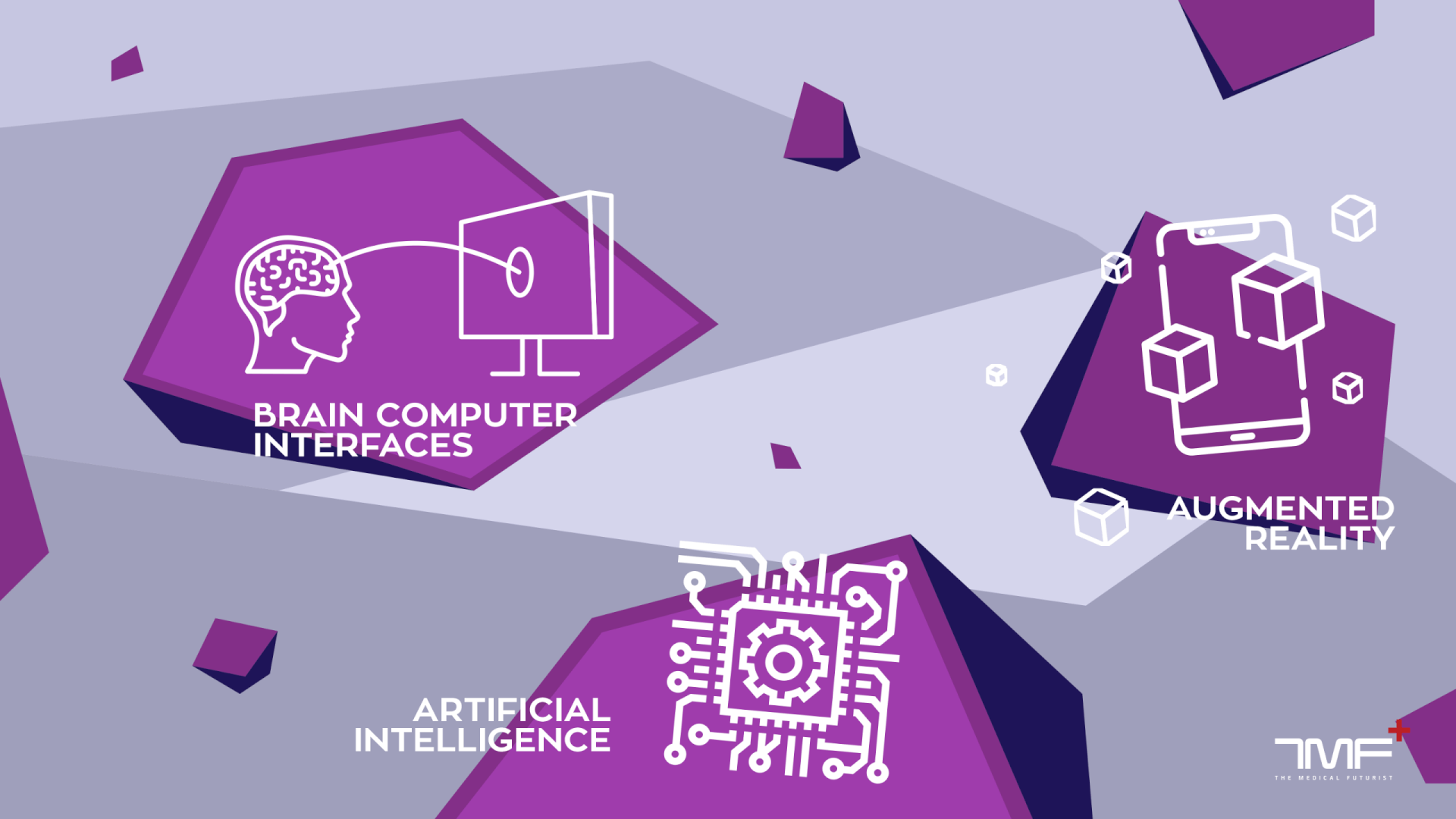
Technology and humans hand-in-hand for a better healthcare
I honestly believe that this is the only way forward. Technology can only aid and improve our lives if we stand on its shoulder and if we are always (at least) two steps ahead of it. But if we adhere to this rule, the cooperation between people and technology could result in amazing achievements.
In medicine and healthcare, digital technology could help transform unsustainable healthcare systems into sustainable ones, equalize the relationship between medical professionals and patients, provide cheaper, faster and more effective solutions for diseases – technologies could win the battle for us against cancer, AIDS or Ebola – and could simply lead to healthier individuals living in healthier communities.
But as the saying goes, one has to be a master of his own house, so it is worth starting “the future” with the betterment of our own health through digital technologies, as well as changing our own attitude towards the concept of health as such and towards medicine and healthcare.
And what does it all look like in practice? To serve as an introduction, this article will explore 10 ways in which medical technology is reshaping healthcare. For more in-depth analysis and further examples, I invite you to check the book I wrote titled The Guide to the Future of Medicine.
1. Artificial intelligence
I believe that artificial intelligence has the potential to redesign healthcare completely. AI algorithms are able to mine medical records, design treatment plans or create drugs way faster than any current actor on the healthcare palette including any medical professional.
Atomwise uses supercomputers that root out therapies from a database of molecular structures. In 2015, the start-up launched a virtual search for safe, existing medicines that could be redesigned to treat the Ebola virus. They found two drugs predicted by the company’s AI technology which may significantly reduce Ebola infectivity.
More recently, Google’s DeepMind created an A.I. for breast cancer analysis. The algorithm outperformed all human radiologists on pre-selected data sets to identify breast cancer, on average by 11.5%!
These are only two of the many examples of companies using A.I. to advance healthcare from designing new drugs to disrupting medical imaging to mining medical records. We’ve collected our favourite examples in a recent article. With all these tangible examples, imagine what horizons would open for humanity if early utilization of AI results in such amazing discoveries!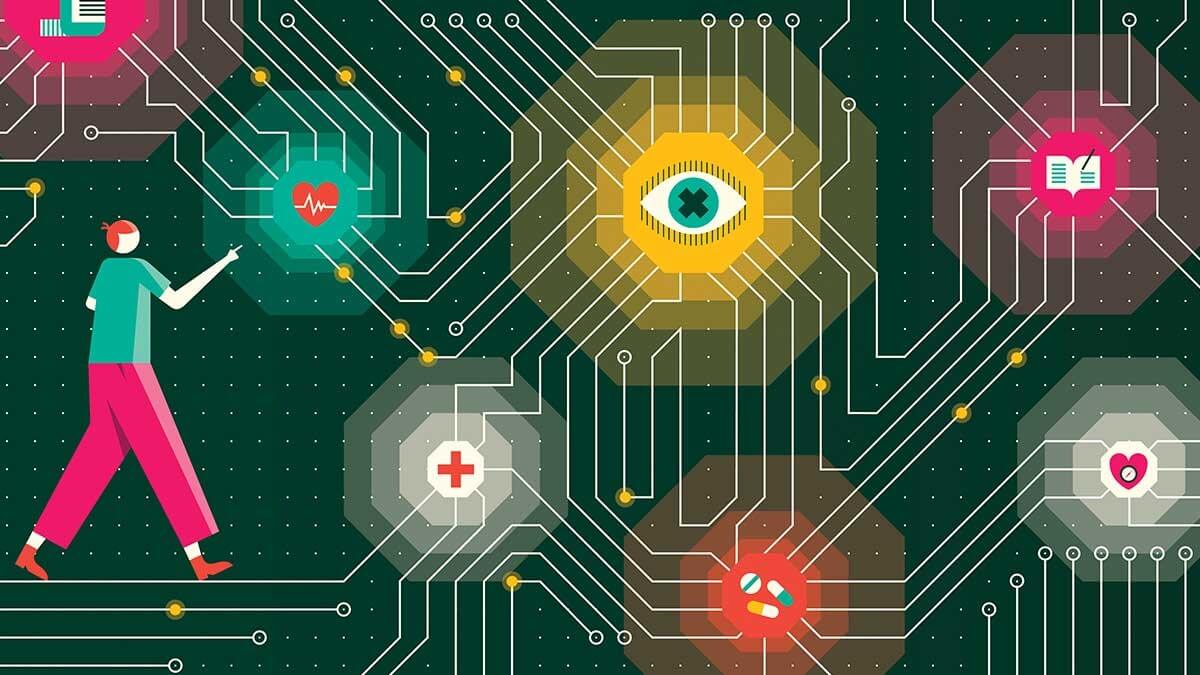 Source: https://hbr.org/
Source: https://hbr.org/
2. Virtual reality
Virtual reality (VR) is changing the lives of patients and physicians alike. In the future, you might watch operations as if you wielded the scalpel or you could travel to Iceland or home while you are lying on a hospital bed.
VR is being used to train future surgeons and for actual surgeons to practice operations. Such software programmes are developed and provided by companies like Osso VR and ImmersiveTouch and are in active use with promising results. A recent Harvard Business Review study showed that VR-trained surgeons had a 230% boost in their overall performance compared to their traditionally-trained counterparts. The former were also faster and more accurate in performing surgical procedures.
The technology is also benefiting patients and has been proven to be effective in pain management. Women are being equipped with VR headsets to visualize soothing landscapes so as to help them get through labour pain. Patients suffering from gastrointestinal, cardiac, neurological and post-surgical pain have shown a decline in their pain levels when using VR to distract them from painful stimuli. A 2019 pilot study even showed that patients undergoing surgery lessened their pain and anxiety and improved their overall hospital experience.
3. Augmented reality
Augmented reality differs from VR in two respects: users do not lose touch with reality and it puts information into eyesight as fast as possible. These distinctive features enable AR to become a driving force in the future of medicine; both on the healthcare providers’ and the receivers’ side.
In case of medical professionals, it might help medical students prepare better for real-life operations, as well as enables surgeons to enhance their capabilities. This is already the case at Case Western Reserve University where students are using the Microsoft HoloLens to study anatomy via the HoloAnatomy app. Using this method, medical students have access to detailed and accurate, albeit virtual, depictions of the human anatomy to study the subject without the need of real bodies.
Another promising company, Magic Leap, will also bring its slightly different, mixed reality headset to healthcare. Magic Leap has partnered with SyncThink for brain health, with XRHealth for developing a therapeutic platform and with German healthcare technology company Brainlab to bring its spatial computing technology to healthcare. However, no commercial products are yet available from these partnerships but we’re bound to see them populate the healthcare market in the near future.
4. Healthcare trackers, wearables and sensors
As the future of medicine and healthcare is closely connected to the empowerment of patients as well as individuals taking care of their own health through technologies, I cannot leave out health trackers, wearables and sensors from my selection. They are great devices to get to know more about ourselves and retake control over our own lives.
I personally use the Fitbit Ionic to monitor my sleep and track my workout. I supplement it with the Polar H10 to fine-tune my workout routines with my trainer so as to find the best exercises for my abilities. For meditation, the Muse headband helped me a lot to find the main things that I personally need for a successful meditation session. Now I don’t have to use the device to try to reach mindfulness!
No matter whether you would like to manage your weight, your stress level, your cognitive capabilities better or you would like to reach an overall fit and energetic state, there is a device for all of these needs and more! The beauty of these new tech-fuelled devices is that they really make patients the point-of-care. With the ability to monitor one’s health at home and share the results remotely with their physician, these devices empower people to take control of their health and make more informed decisions.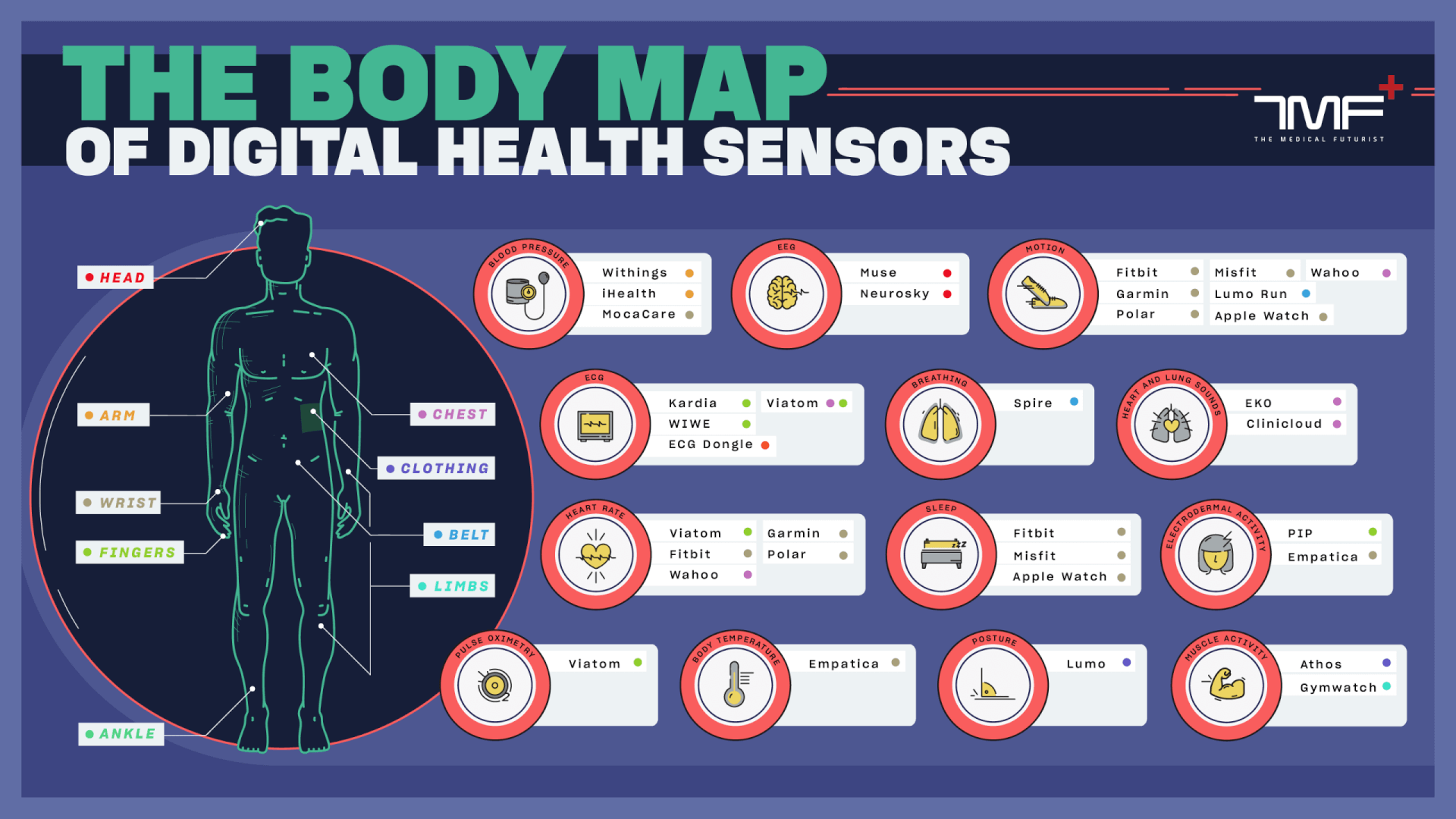
5. Medical tricorder
When it comes to gadgets and instant solutions, there is the great dream of every healthcare professional: to have one almighty and omnipotent device, with which you can diagnose and analyze every disease. It even materialized – although only on screen – as the medical tricorder in Star Trek. When Dr McCoy grabbed his tricorder and scanned a patient, the portable, hand–held device immediately listed vital signs, other parameters, and a diagnosis. It was the Swiss Army knife for physicians.
With the exponential progress in healthcare technology, we now live in a world where similar devices, which were once a figment of sci-fi enthusiasts, are available! The Viatom CheckMe Pro is one such palm-sized gadget which can measure ECG, heart rate, oxygen saturation, temperature, blood pressure and more! There are also other companies working on similar devices like the MedWand which on top of measuring multiple vital parameters, packs a camera for telemedical purposes. Then there’s the FDA-cleared BioSticker from BioIntelliSense which, despite being tiny and thin, can measure a wide range of parameters like respiratory rate, heart rate, skin temperature, body position, activity levels, sleep status, gait and more.
Although the currently available products are a bit far from the tricorder, we will get there soon. You will see high–power microscopes with smartphones, for example, analyzing swab samples and photos of skin lesions. Sensors could pick up abnormalities in DNA, or detect antibodies and specific proteins. An electronic nose, an ultrasonic probe, or almost anything we have now could be yoked to a smartphone and augment its features. And we have to get ready for it!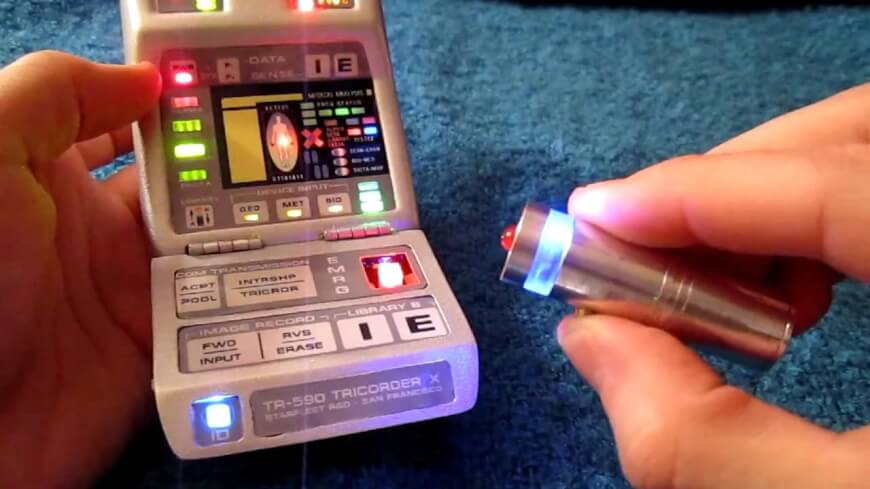
6. Genome sequencing
The whole Human Genome Project cost approximately $2.7 billion for the US government, which is an insanely huge amount of money. Especially if you consider that in January, 2017, DNA sequencing giant Illumina unveiled a new machine that the company says is “expected one day” to order up your whole genome for less than $100. Last year, the company’s CEO reiterated that Illumina is still working towards that benchmark. This would mean that you might have a cheaper genetic test than a general blood test (for which prices vary between approximately $10-150). Mind-blowing!
Such a test has so much potential! You can get to know valuable information about your drug sensitivity, multifactorial or monogenic medical conditions and even your family history. Moreover, there are already various fields leveraging the advantages of genome sequencing, such as nutrigenomics, the cross-field of nutrition, dietetics and genomics. Some companies such as the California-based start-up, Habit, are offering personalized diets based on genetic codes.
I also took the Atlas Biomed’s genetic test which proved to be quite insightful. Its analyzes, despite some being difficult to understand, provided practical calls to action. It showed me that I should have a higher intake of vitamins A and E and iron, and that I don’t have any lactose, gluten, or alcohol intolerance. In addition, it also revealed conditions to which I am at risk, which is informative so as to take preventive actions.
7. Revolutionizing drug development
Currently, the process of developing new drugs is too long and too expensive. However, there are ways to improve drug development with methods ranging from artificial intelligence to in silico trials. Such new technologies and approaches already are and will be dominating the pharmaceutical landscape in the years to come.
Companies like Turbine, Recursion Pharmaceuticals and Deep Genomics are leveraging the power of A.I. to develop new drug candidates and novel therapeutic solutions in record time and speed up the time to market, all while saving costs and lives.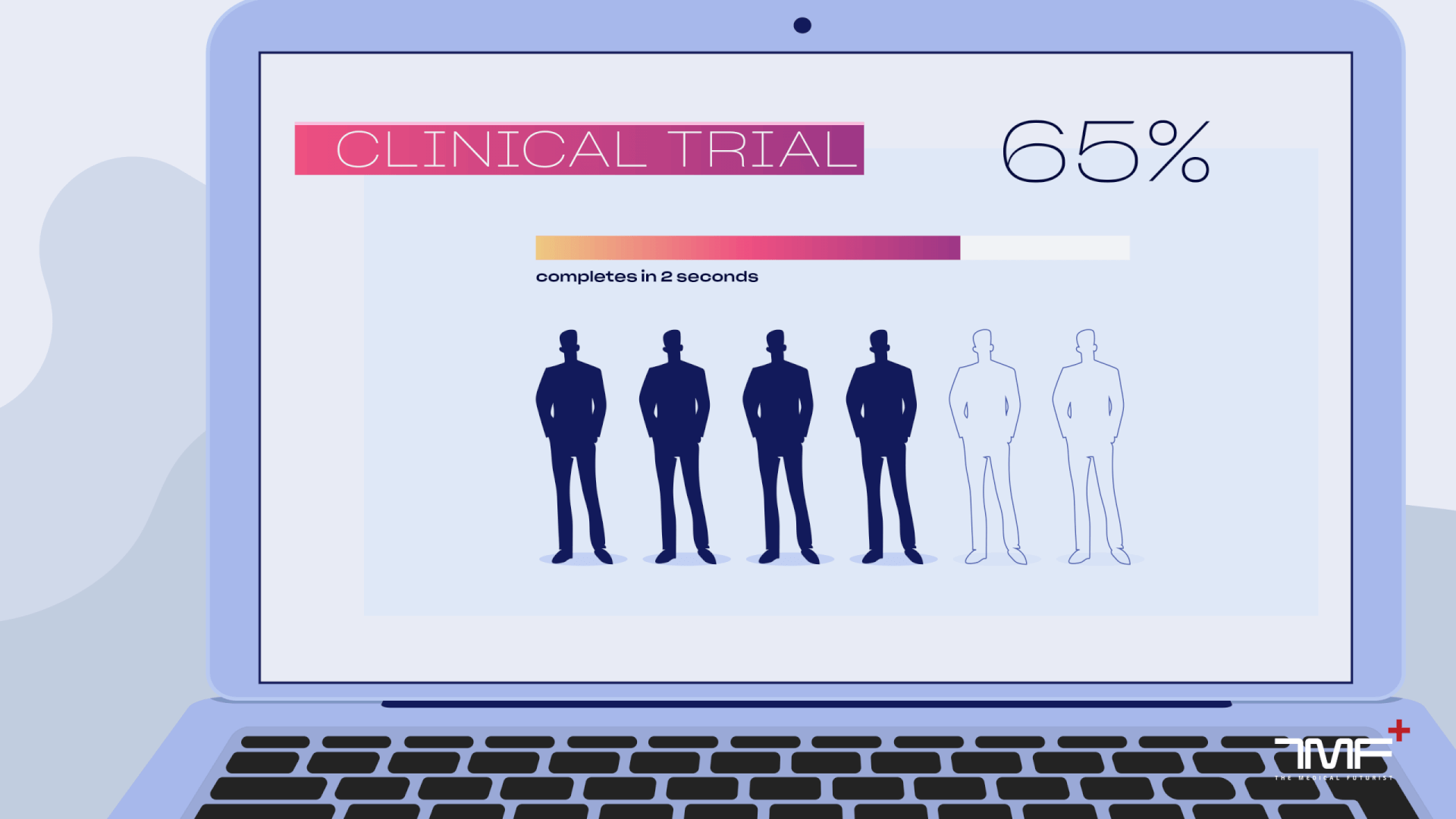 Another promising healthcare technology is in silico drug trials. These are individualized computer simulations used in the development or regulatory evaluation of a medical product, device or intervention. While the current technology and biological understanding don’t allow for completely simulated clinical trials, there is significant progress in this field with organs-on-a-chip, which are already being put in use. HumMod, or the “most complete, mathematical model of human physiology ever created”, is being employed in several research projects. Virtual models have also been created by the Virtual Physiological Human (VPH) Institute which are used to study heart diseases and osteoporosis.
Another promising healthcare technology is in silico drug trials. These are individualized computer simulations used in the development or regulatory evaluation of a medical product, device or intervention. While the current technology and biological understanding don’t allow for completely simulated clinical trials, there is significant progress in this field with organs-on-a-chip, which are already being put in use. HumMod, or the “most complete, mathematical model of human physiology ever created”, is being employed in several research projects. Virtual models have also been created by the Virtual Physiological Human (VPH) Institute which are used to study heart diseases and osteoporosis.
Imagine if we could test thousands of new potential drugs on billions of virtual patient models in minutes? We might reach this stage in the near future.
8. Nanotechnology
We are living at the dawn of the nanomedicine age. I believe that nanoparticles and nanodevices will soon operate as precise drug delivery systems, cancer treatment tools or tiny surgeons.
As far back as 2014, researchers from the Max Planck Institute designed scallop-like microbots designed to literally swim through your bodily fluids. Small, smart pills like the PillCam are already in use for colon exams in a noninvasive, patient-friendly way. In late 2018, MIT researchers created an electronic pill that can be controlled wirelessly and relay diagnostic information or release drugs in response to smartphone commands.
Nanotechnology is also making progress in the form of smart patches. At CES 2020, France-based company Grapheal demonstrated its smart patch that allows continuous monitoring of wounds and its graphene core can even stimulate wound healing.
As the technology evolves, we will see more practical examples of nanotechnology in medicine. Future PillCams could even take biopsy samples for further analysis while remote-controlled capsules could make the prospect of nano-surgeons a reality.
9. Robotics
One of the most exciting and fastest growing fields of healthcare is robotics; developments range from robot companions through surgical robots until pharmabotics, disinfectant robots or exoskeletons.
2019 was a great year for exoskeletons. It saw Europe’s first exoskeleton-aided surgery and a tetraplegic man capable of controlling an exoskeleton with his brain! There are loads of other applications for these sci-fi suits from aiding nurses through lift elderly patients to helping patients with spinal cord injury.
Robot companions also have their place in healthcare to help alleviate loneliness, treat mental health issues or even help children with chronic illness. The Jibo, Pepper, Paro and Buddy robots are all existing examples. Some of them even have touch sensors, cameras and microphones for their owners to interact with them. For instance, ikki from an Australian startup is helping children with chronic illnesses monitor their medications, temperature and breathing rate while keeping them company with music and stories.
10. 3D-printing
3D-printing can bring wonders in all aspects of healthcare. We can now print biotissues, artificial limbs, pills, blood vessels and the list goes on and will likely keep on doing so.
In November 2019, researchers at the Rensselaer Polytechnic Institute in Troy, New York, developed a method to 3D-print living skin along with blood vessels. This development proves crucial for skin grafts for burn victims. Also, helping patients in need are NGOs like Refugee Open Ware and Not Impossible which 3D-print prosthetics for refugees from war-torn areas.
The pharmaceutical industry is also benefiting from this technology. FDA-approved 3D-printed drugs have been a reality since 2015 and researchers are now working on 3D-printing “polypills”. These contain several layers of drugs so as to help patients adhere to their therapeutic plan.
Food for thought
We are truly living in revolutionary times for healthcare thanks to the advent of digital health. Our mission is to spread the knowledge and developments in healthcare that will usher the real era of the art of medicine. Join us in this mission by sharing our articles and your thoughts with us!
At The Medical Futurist, we are building a community for making a bold vision about the future of healthcare reality today.
If you’d like to support this mission, we invite you to join The Medical Futurist Patreon Community. A community of empowered patients, future-oriented healthcare professionals, concerned health policymakers, sensible health tech developers, and enthusiastic medical students. If there were ever a time to join us, it is now. Every contribution, however big or small, powers our research and sustains our future.
Click here to support The Medical Futurist from as little as $3 – it only takes a minute. Thank you.
Editor's picks
10 Reasons Why People Should Not Fear Digital Health Technologies
Healthcare Technology Trends: The Top 40
Related e-books
A Guide to Artificial Intelligence in Healthcare
